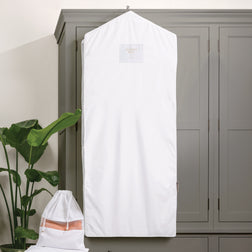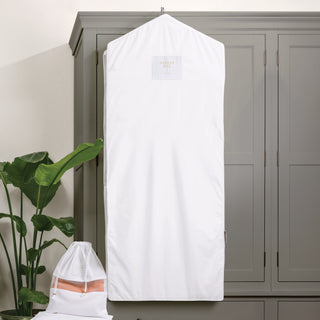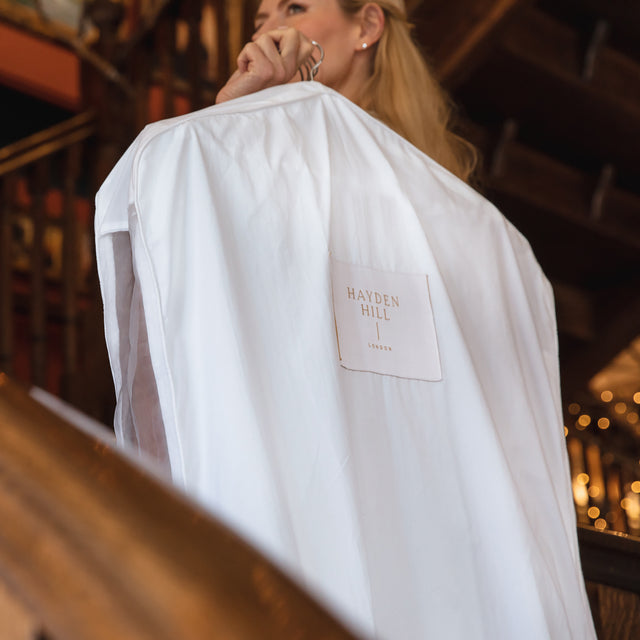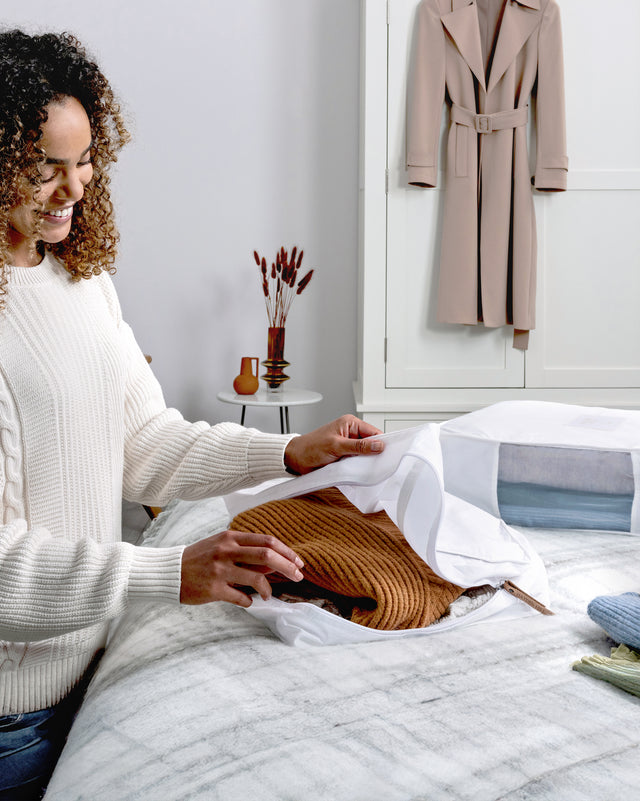Pilling may be unavoidable for certain types of cashmere garments, but you can minimize pilling or remove existing pilling easily. With this guide, we’ll help you keep your favorite pieces in excellent condition for a long time to come.
It’s irritating to look through the clothes in your closet and notice that one of your favorite cashmere sweaters is getting pills.
After all, it’s practically new, and you’ve done everything right. You hand-wash your cashmere with a mild detergent, you make sure it dries flat, you fold it rather than hang it for storage - but your garment still has pills!
Those annoying little tufts of fabric make even the most luxurious cashmere look like a dollar store rag.
Pilling may be unavoidable for certain types of cashmere garments, but you can minimize pilling or remove existing pilling easily. With this guide, we’ll help you keep your favorite pieces in excellent condition for a long time to come.
What Causes Pilling on Cashmere Garments?
Cashmere is not the only textile prone to pilling, but given its expense relative to the cost of other natural fibers, its pilling is especially frustrating. Three basic factors come into play when predicting how much your cashmere will pill: the fiber quality of your cashmere piece, your wearing habits, and the environment in which you wear it.
Fiber Quality
Cashmere has three quality classification levels, known as grades A through C.
Grade C Cashmere
The lowest quality of cashmere is Grade C. Cashmere of this grade has fibers that are thicker than average, with a diameter of about 30 microns. Grade C cashmere is also the cheapest.
Grade B Cashmere
The fibers of the second tier of cashmere are a bit thinner, averaging around 19 microns. Although thicker and longer on average compared to Grade A, Grade B fibers still make high-quality cashmere.
Grade A Cashmere
Grade A is the most expensive of all cashmere, because it is the thinnest, longest, and most durable. The diameter of Grade A cashmere is 14 microns, and the length is around 36mm.
Grade A cashmere is the most expensive because of its fiber strength despite its thinness. The garment is more durable, and consequently, has more longevity.
There are also differences in how the fibers wear. Higher quality cashmere pills less than lower grades, and they retain their shape much better. Plus, finer cashmere is infinitely softer.
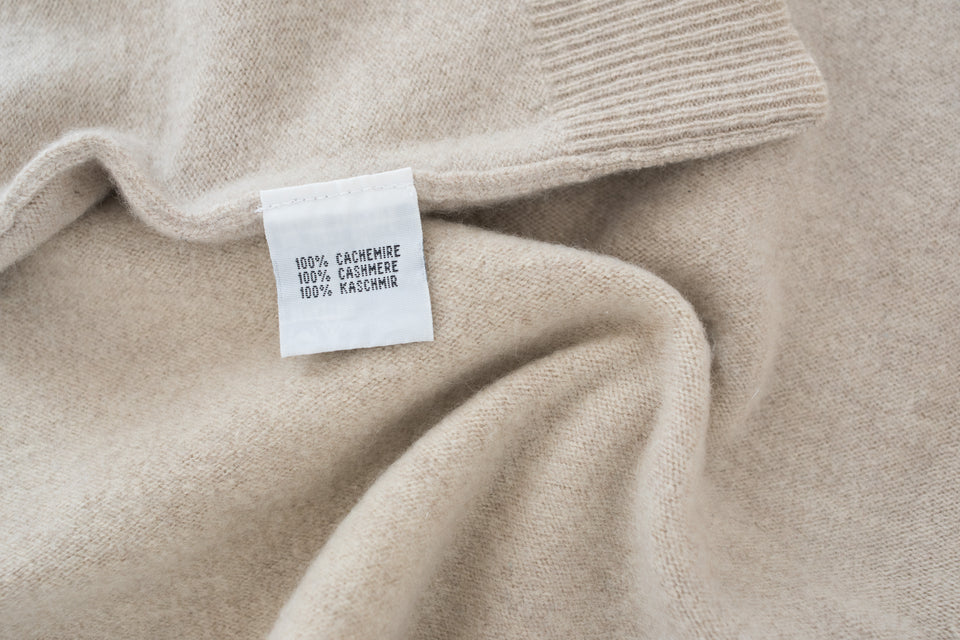
Does good quality cashmere pill?
Sadly, yes. All cashmere will pill, but low-quality cashmere may pill immediately if you rub a layer of it between your fingers.
This happens due to the grade’s shorter, thicker fibers. When spun together, natural fibers interlock, which is how we get yarn. Long, thin fibers form a stronger bond than short, thick ones do, so even a little friction will pull apart a low-grade garment more easily than a higher quality piece.
Wear
How an individual wears a cashmere garment is also a factor in how much it will pill. Even the most expensive, highest-quality cashmere is going to pill all over if you’re wearing it roughly.
Roughly, that is, by cashmere’s standards. Layering clothing is a popular way to stay cool while indoors and warm while outdoors - but if your cashmere is worn as a middle layer, you’re increasing the chance it will pill.
Pilling itself may seem only a cosmetic concern, but consider this. A pill is a ball of knotted fabric still stuck to an otherwise intact strand. Should it catch on a button or a ring and snag, you could be dealing with actual damage to the item instead of just a slight case of shedding.
Even with careful wear, you’re still likely to find pilling takes place around the neckline, hems, and cuffs of your cashmere garment. Anywhere the fabric creases while worn, like beneath the arms, is also prone to pilling rapidly.
Environment
You’re not likely to wear your best cashmere sweater on a mountain climbing expedition, but the warmth and softness of cashmere make it a popular choice for winter wear. Winter weather may bring some form of precipitation - rain or snow- that could land on your favorite cardigan.
Those seemingly harmless, damp splotches pose a risk to your garment, even when you are still wearing it. Cashmere is at its most vulnerable when wet. Natural fibers like wool lose their shape and stretch once they’ve become saturated, which causes breakage, and breakage leads to pilling.
However, environmental concerns aren’t limited to what happens outside the home. Factors inside your home can also impact how much your cashmere items pill.
Your storage practices play a big part in maintaining high-quality cashmere. The cause of pilling is simple: friction between fibers. And surprisingly, cashmere garments aren’t immune to friction while in storage.
In our comprehensive guide on caring for cashmere properly, we highlight the importance of protecting each layer of cashmere from touching the next. Using acid-free tissue paper in between layers is one of the best solutions to this problem.
Placing a layer of tissue paper between the folds of a natural-fiber garment keeps the thin wisps of cashmere wool from tangling together while in storage. It can also prevent any remnants of body oils or perspiration from transferring to another piece of the garment, causing further damage and increasing the risk of pills.
It is also best not to stack cashmere garments too tightly on top of one another. The compression that results can shred the bond between those natural fibers, which will appear as pills when you next wear the item.
Pilling may be the least of your worries if you fail to consider clothes moths and other pests when storing your cashmere clothing. Clothes moths can be difficult to eliminate and extremely destructive. That’s why it’s important to be proactive and take the necessary precautions to prevent moths.
Hayden Hill garment bags protect your items from moths and preserve the beauty of your clothing. Our clothes storage bags are made of organic, soft cotton with a sheer, organza side panel so you can see your pieces while keeping them protected from light and dust. Hayden Hill delivers sustainable and beautiful garment care to protect what you love.

Tools & Tips for Removing Cashmere Pilling
Though it is possible to decrease pilling by caring for your garments properly, it is impossible to eliminate them completely. That’s why it is good to have a few tricks for removing pills when they appear.
Common tools used for depilling cashmere
- Cashmere or sweater comb. Arguably one of the more traditional and perhaps safer methods of pill removal, a fine-toothed comb is a popular and inexpensive choice. The trick is to start with a clean, dry garment laid flat, then comb downward to gently detangle pills.
- Fabric shaver. You may have seen some internet experts insist that a simple, single-blade razor that you’d use in the shower can be used to depill your favorite sweater. While the fabric shaver proves this concept true, it is better to purchase a shaver made for cashmere than to use a razor from the shower. Garment shavers work by electronically shearing off the little knobs of fabric from the surface of the fabric.
- Lint roller. These may be made with sticky, disposable adhesive patches or with a felted fabric that catches stray bits from the surface of a garment and clings to it until cleaned off. Lint rollers may not be as effective at removing pills if the pills are tightly tangled with the surrounding fibers of fabric.
- Lint stone. This is a natural pumice stone used much like a comb, with results similar to that of a fabric shaver. The dry garment is laid out flat before gliding the pumice stone down the garment’s surface. The pock-marked surface of the pumice catches each little fuzzball and gently tugs it free from its tangle.
- Scissors. Obviously, snipping each pill one by one would be a huge chore if you have a lot of them to clear off. But, if you just have a few errant knots gathering, you can gently clip it off. The finer the point and the sharper the scissors, the more effective this method will be.
If you want to choose the option that will help you preserve your garments the longest, select tools that do not cause unnecessary stress to the fabric itself. You can avoid tugging with a comb or stone by using a light, gentle touch - but if your shaver is dull or your lint roller’s adhesive is extra sticky, they could wind up snagging a pill instead of removing it.

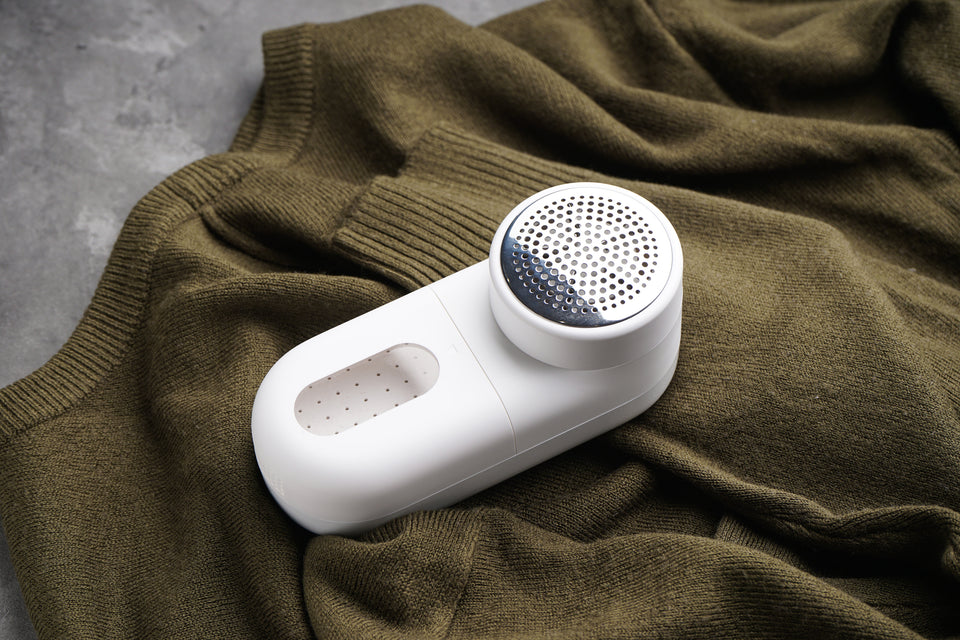
Washing your cashmere garments properly is another way to decrease pilling. Though we have another article that covers this topic more in-depth, here are six general tips for washing cashmere correctly.
Tip #1: Don’t wash cashmere after every wear.
If this tip seems contradictory to our recommendation to wash your cashmere before you store it, let’s clarify. For example, let’s say it’s winter and you plan to wear your favorite cashmere pieces more than once per month. In this case, it is better to wear the item a couple of times before washing it.
Even a gentle wash will cause the natural fibers of your cashmere to push and rub together, and we know that kind of friction is what causes pilling to happen. If you can wear it two or three times before washing, you can prevent excessive pilling from developing.
Naturally, if you have stained the garment or sweat in it, washing it is a must.
Tip #2: Never scrub or twist the cashmere garment.
When you see a speck, spot or stain, your first instinct may be to get a washcloth and start scrubbing. With cashmere, that is the last thing you should do. That pressure stretches the wet strands of wool and can cause them to break.
Even a little breakage that might not be visible to the naked eye can quickly develop into a stubborn knot that forms on the surface of the garment. If you’re spot-treating or just washing by hand as part of your regular cleaning schedule, be sure to dab and squeeze gently instead of scrubbing and twisting.
Tip #3: Wash and dry cashmere clothes inside out.
Whether you’re hand-washing or machine-washing your cashmere garments at home, turn them inside out beforehand. This may not seem significant if you hand-wash each item individually, but even then, it can reduce the amount of friction the outer surface of the garment experiences.
It makes even more sense if you’re washing similar items together. Fundamentally, there’s nothing different between the outside and the inside of a garment, but each pill that develops is essentially thinning the surrounding strands of yarn its fibers come from. The logic behind turning the item inside out, then, is that this should occur from the inside of the garment rather than out.
Washing your cashmere items properly is key to extending their lives. Check out this post for more detailed information on washing your cashmere garments.
Tip #4: Give your cashmere garments breathing room in the closet.
A cashmere sweater, for instance, doesn’t need to sit by itself on a single closet shelf, but you should avoid stacking multiple items one on top of the other until they are flattened. As mentioned earlier, that kind of pressure strains the bonds between natural fibers, stretching them out of shape and making them more likely to bunch up into tiny knots.
Remember our tip about storing cashmere with acid-free tissue paper between its layers? It’s a good idea to do this whether you are placing the garment on the shelf to be worn soon or whether you are putting it into long-term storage.
For in-depth information on how to properly store your cashmere, read our post, How To Store Cashmere.

Tip #5: When in doubt, seek for a professional’s help.
Most of these tools and tricks work just fine for the average person with modern-day cashmere garments. If you own an heirloom piece or a high-end, haute couture garment, then you may need the help of a specialist to remove pills.
The process is much the same, but a garment specialist - which could be your local dry cleaner or a skilled costumer - will know just how much stress your precious piece can take. They may be able to teach you how to maintain it in between visits, as well, if you’re comfortable learning.
No matter which tool, tip, or technique you try for yourself, start slow, use a gentle touch and never attempt to depill a wet or dirty garment.
Follow these tips and techniques to depill your cashmere garments and keep them in pristine condition. A bit of time and care is all it takes to maintain the value and extend the life of your favorite cashmere pieces.

